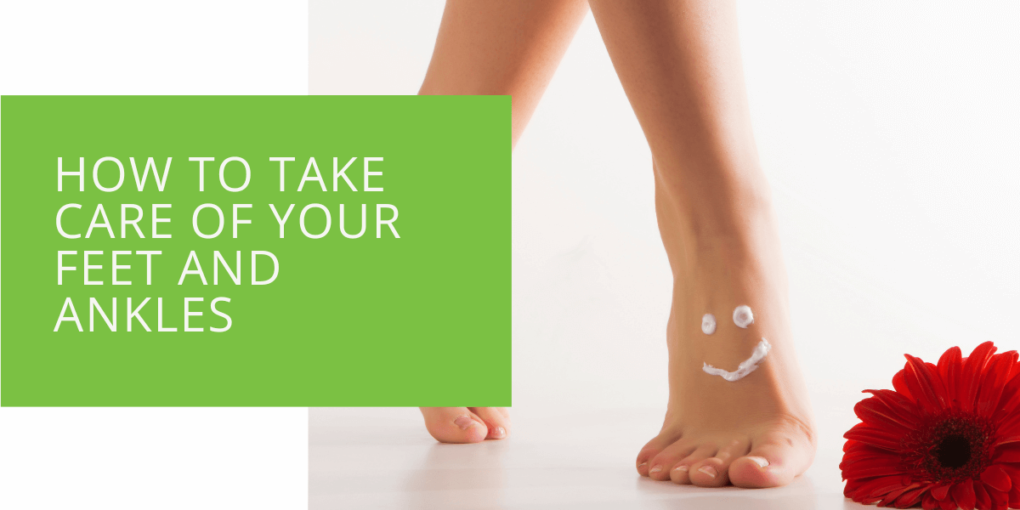How to Take Care of Your Feet and Ankles
Feet and ankles are the body's foundation, and caring for them is essential for overall health and mobility. From daily habits to advanced foot care, there are many ways to keep your feet and ankles healthy and prevent common foot problems.
This article will discuss expert tips and advice from podiatrists on foot and ankle care. We'll cover everything from choosing the right shoes to treating foot conditions and injuries.
Why Foot and Ankle Care is Important
Foot and ankle health is essential for overall body alignment, balance, and mobility. Neglecting to care for your feet and ankles can lead to a range of foot problems, from cracked skin and heel pain to fungal infections and ingrown toenails.
Daily foot care is also important for preventing conditions and injuries, such as plantar fasciitis, Achilles tendonitis, and ankle sprains. By prioritizing foot care, you can reduce your risk of foot problems and improve your overall quality of life.
Tips for Daily Foot and Ankle Care
Taking care of your feet and ankles starts with daily habits that promote foot health. Here are some tips to keep your feet healthy:
- Wash your feet daily with warm water and mild soap, and clean between your toes and under your nails.
- Dry your feet thoroughly, especially between your toes, to prevent moisture buildup that can cause fungal infections or blisters.
- Apply lotion or cream to your feet to moisturize them, especially the heels and soles, which are prone to cracking.
- Use a pumice stone to remove dry, dead skin and calluses, but avoid using a razor or other sharp tool that may cause injury.
- Trim your toenails straight across, and file the edges with an emery board to prevent ingrown toenails.
- Wear clean socks made of breathable materials that absorb sweat and moisture.
- Choose shoes that fit well and provide proper arch support, cushioning, and shock absorption.
- Use inserts or orthotics to provide additional support or correct foot problems.

Choosing the Right Footwear
Wearing the right shoes is crucial for foot and ankle health, especially if you spend much time on your feet or engage in sports or other high-impact activities. Here are some tips for choosing the right shoes:
- Measure your feet regularly to ensure a proper fit, and try on shoes at the end of the day when your feet are most swollen.
- Look for shoes that provide adequate support for your arch and cushioning for your sole and heel.
- Choose shoes appropriate for your activity level, whether running, walking, hiking, or working.
- Avoid wearing high heels or shoes with a narrow toe box that can cause or worsen foot problems such as bunions, plantar fasciitis, and ingrown toenails.
- Break in new shoes gradually to prevent blisters or sore spots.
Foot and Ankle Exercises
Regular foot and ankle exercises can help prevent foot problems and improve mobility, flexibility, and strength. Here are some exercises to try:
- Calf stretches: Stand facing a wall with your hands on the wall, one foot forward, and one foot back. Bend your front knee and lean into the wall, keeping your back leg straight. Hold for 15-30 seconds and repeat on the other side.
- Achilles stretch: Stand on a step with your heels hanging off the edge. Lower your heels down until you feel a stretch in your Achilles tendon. Hold for 15-30 seconds and repeat several times.
- Toe raises: Stand flat on the ground, then raise your toes as high as possible while keeping your heels on the ground. Hold for a few seconds, then lower your toes. Repeat several times.
- Ankle circles: Sit with your legs extended in front of you. Slowly rotate your ankle in a circular motion, first in one direction, then in another. Repeat with the other ankle.

Common Foot and Ankle Problems
Even with good foot and ankle care, problems can still occur. Here are some common foot and ankle problems and their causes:
- Plantar fasciitis: Inflammation of the band of tissue that connects the heel to the toes, causing heel pain.
- Achilles tendonitis: Inflammation of the Achilles tendon can cause pain and swelling in the back of the heel.
- Ankle sprain: A stretching or tearing of the ligaments in the ankle, causing pain, swelling, and bruising.
- Ingrown toenail: When the nail grows into the skin, causing pain, redness, and swelling.
- Fungal infections: Such as athlete's foot and toenail fungus, can cause itching, cracking, and discoloration of the skin or nails.
If you experience any of these foot and ankle problems, seeking medical attention from a podiatrist specializing in foot and ankle care is important. Treatment may include rest, ice, compression, elevation, and medication or surgery in more severe cases.
Advanced Foot and Ankle Care
Advanced foot and ankle care may sometimes be necessary to treat foot problems or injuries. Here are some options for advanced foot and ankle care:
- Orthotics: Custom-made shoe inserts that provide support, cushioning, and correction for foot problems such as flat feet, plantar fasciitis, and bunions.
- Bracing: Devices that support and stabilize the foot and ankle, such as ankle braces and walking boots.
- Surgery: In more severe cases of foot and ankle problems or injuries, surgery may be necessary to repair or reconstruct the affected area.
Conclusion
Taking care of your feet and ankles is essential for overall health and mobility. By following daily foot care habits, choosing the right shoes, and performing regular foot and ankle exercises, you can help prevent common foot problems and injuries.
If you experience foot and ankle problems or injuries, seeking medical attention from a podiatrist specializing in foot and ankle care is important. You can maintain healthy feet and ankles and enjoy an active, pain-free lifestyle with proper treatment and care.

